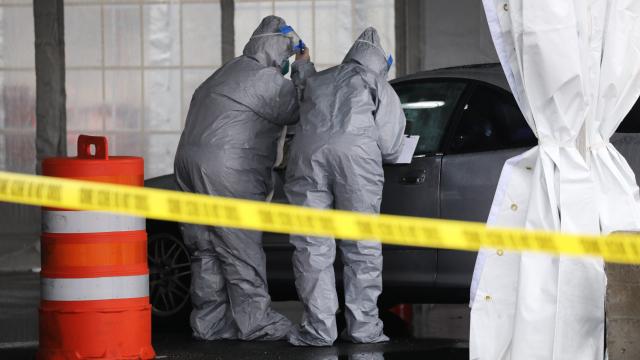Our scientific knowledge of COVID-19 and the coronavirus that causes it, SARS-CoV-2, is fast expanding. And while much of this research is preliminary, released on preprint servers not yet peer reviewed, it nonetheless could provide key insights about a pandemic that’s set to drastically affect the world for some time. Below are some recent studies about the virus and its health effects.
COVID-19 in the United States
A study published Friday in the Lancet delves into the first known case of human-to-human transmission in the U.S., documented in late January by Illinois health officials and doctors.
According to the report, the case involved a woman in her 60s who had recently travelled back from Wuhan, China to the state; she then transmitted the virus to her husband. The first case was reported on January 23, while the second case was reported a week later, on January 30.
The woman and her husband, who were both hospitalised, could have exposed at least 372 people once their symptoms began, including nearly 200 health care workers, health officials estimate. Over 340 of these contacts were monitored for two weeks.
Ultimately, 43 people developed the most common symptoms of COVID-19—a combination of fever, cough, and shortness of breath—and were tested for the virus. But none ended up testing positive. And while the husband did develop serious symptoms, including coughing up blood, both recovered.
“These data suggest that person-to-person transmission of COVID-19 might be most likely to occur through unprotected, prolonged exposure to a patient with symptomatic COVID-19,” the authors wrote, while cautioning that this case may not be applicable to the wider population.
Other reports have suggested that some infected people can be “super-spreaders” of the virus, meaning they are much more contagious.
However, the greatest risk of catching it likely remains close, sustained contact with an infected person who is showing symptoms. That also means, unfortunately, that health care workers and caretakers are especially at risk, and those are the people most in need of protective measures such as face masks.
First Chinese case as early as November
While the U.S. is only now just gearing up for its outbreak, China was the first to publicly report cases of covid-19 in late December. These early reported cases were all linked to a food market in Wuhan, China, leading to speculation the live animals there may have seeded the outbreak in the first place.
However, a news report out Friday from the Chinese media outlet South China Morning Post suggests that the true start of the outbreak may have been at least a month earlier.
Reportedly based on government documents, the article describes at least nine cases of COVID-19 reported by doctors in November, with the earliest being a 55-year-old man who may have contracted it on November 17. However, according to the South China Morning Post, it wasn’t until mid-December that doctors and health officials realised they were dealing with a never-before-seen disease.
At least one early study of Chinese patients has also suggested that cases were already happening in November. But these findings, if true, don’t preclude the possibility that the outbreak may have started even earlier or that the food market in Wuhan did not play an important role in spreading it further. Patient zero, for now, likely remains elusive.
Pregnant women and covid-19
Pregnant women and their fetuses tend to more vulnerable during outbreaks of infectious disease. The widespread Zika outbreak during 2015 and 2016, for instance, caused countless miscarriages and stillborn births, while thousands of children were born with lasting defects. Preliminary research released Friday on the preprint server Medrxiv, however, possibly offers some good news about pregnant women who catch the coronavirus.
The study looked at 16 pregnant women in China confirmed to have covid-19, as well as 18 women suspected of having it, all of whom then went into labour. Most of the women had symptoms or physical signs of mild pneumonia, but none experienced serious complications like respiratory failure. Compared to a control group of women, both confirmed and suspected cases were more likely to have a preterm birth. But none of their children tested positive for the virus nor had any severe complications.
While the study is obviously small and not yet peer-reviewed, it suggests that pregnant women and their children aren’t at higher risk for serious problems caused by covid-19 than the general population and that the virus does not spread easily from mother to unborn child.
